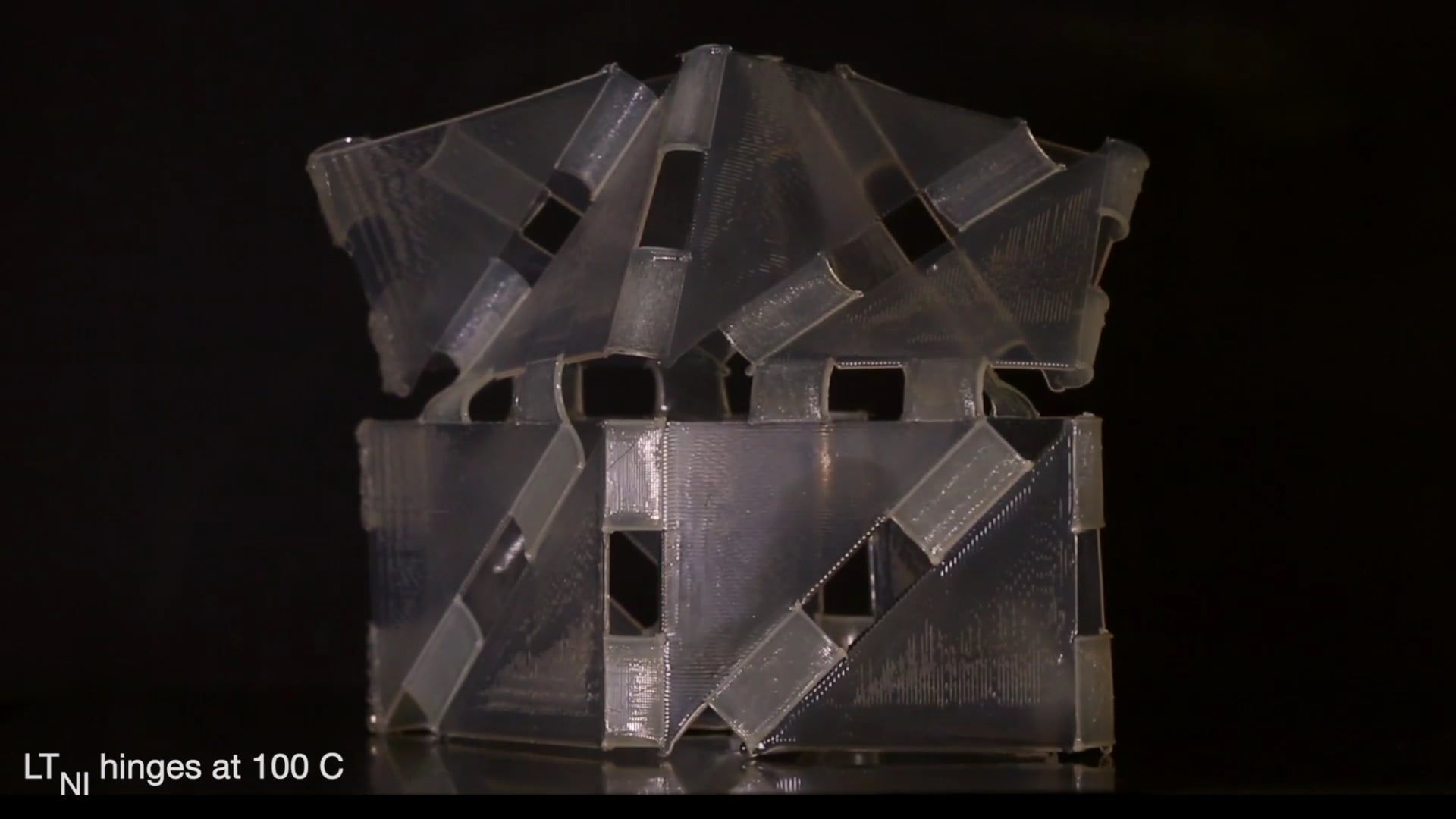Researchers from Harvard University and the California Institute of Technology have developed origami-inspired soft robotic systems that adopts task-specific configurations on demand.
Of the systems fabricated is a 3D printed “Rollbot” that assembles into a pentagonal prism and self-rolls in programmed responses to thermal stimuli. Another 3D printed device is a self-twisting origami polyhedron that exhibits three stable configurations. The soft robots incorporate active hinges that interconnect polymeric tiles.
According to the study published in Science Robotics, such devices could pave the way for passively controlled, fully untethered soft robots used in medicine and industrial engineering. Connor McMahan, co-first author of the paper, explained:
“Many existing soft robots require a tether to external power and control systems or are limited by the amount of force they can exert. These active hinges are useful because they allow soft robots to operate in environments where tethers are impractical and to lift objects many times heavier than the hinges.”
Untethering soft robots
Made from highly flexible materials, soft robots are capable of natural movements similar to living organisms. Such materials rely on external power and control, keeping them tethered to off-board systems or rigged with hard components. The researchers turned to origami to create multifunctional soft robots as sequential folds can encode multiple shapes and functionalities in a single structure.
To target small regions of the robot structures which would respond to changes, active materials within 3D printed objects were integrated including liquid crystal elastomers (LCE). LCE exhibits a large, reversible bending response when exposed to heat. With this material two types of soft hinges were 3D printed that fold at different actuation temperatures.
When heated above their respective temperatures, the 3D printed LCE hinges change shape by corresponding degrees. Varying their chemistry and printed architecture, the hinges’ actuation response can be programmed to fold in a specific order. Arda Kotikian, another co-first author of the paper, explained:
“With our method of 3D printing active hinges, we have full programmability over temperature response, the amount of torque the hinges can exert, their bending angle, and fold orientation. Our fabrication method facilitates integrating these active components with other materials.”
Self-rolling and self-twisting Rollbots
Integrating hinges into the design, the team has built several soft devices using an additive manufacturing approach. The Rollbot begins as an 8 cm x 4 cm flat sheet, and folds on a hot surface of about 200°C into a pentagonal wheel. Embedded on each of the five sides of the wheel is another set of hinges. When in contact with the hot surface, the hinge folds and propels the wheel to turn to the next side, where the next hinge folds. As they roll off the hot surface, the hinges unfold and are ready for the next cycle.
Another device the team devised is a self-twisting origami polyhedron with three stable configurations. When placed in a hot environment, the robot can fold into a compact folded shape resembling a paper clip and unfold itself when cooled. These untethered structures can be passively controlled. In other words, by simply exposing the structures to specific temperature environments, the robots will respond according to how the hinges were programmed .
While this research only focused on thermal stimuli, liquid crystal elastomers can also be programmed to respond to light, pH, humidity and other external stimuli. Chiara Daraio, co-lead author of the study, added:
“This work demonstrates how the combination of responsive polymers in an architected composite can lead to materials with self-actuation in response to different stimuli. In the future, such materials can be programmed to perform ever more complex tasks, blurring the boundaries between materials and robots.”
“Untethered soft robotic matter with passive control of shape morphing and propulsion” is co-authored by Arda Kotikian, Connor Mcmahan, Emily C. Davidson, Jalilah M. Muhammad, Robert D. Weeks, Chiara Daraio and Jennifer A. Lewis.

For more on additive manufacturing in academia, subscribe to our 3D Printing Industry Newsletter, follow us on Twitter, and like us on Facebook. Find talent for a project, or advance your career in 3D printing – join 3D Printing Jobs to apply and advertise.
Featured image shows the 3D printed soft robot which demonstrates sequential folding as the temperature increases from ambient temperature to 100°C, where the top hinges actuate, to 150°C where the bottom hinges actuate. Photo via Harvard University.



